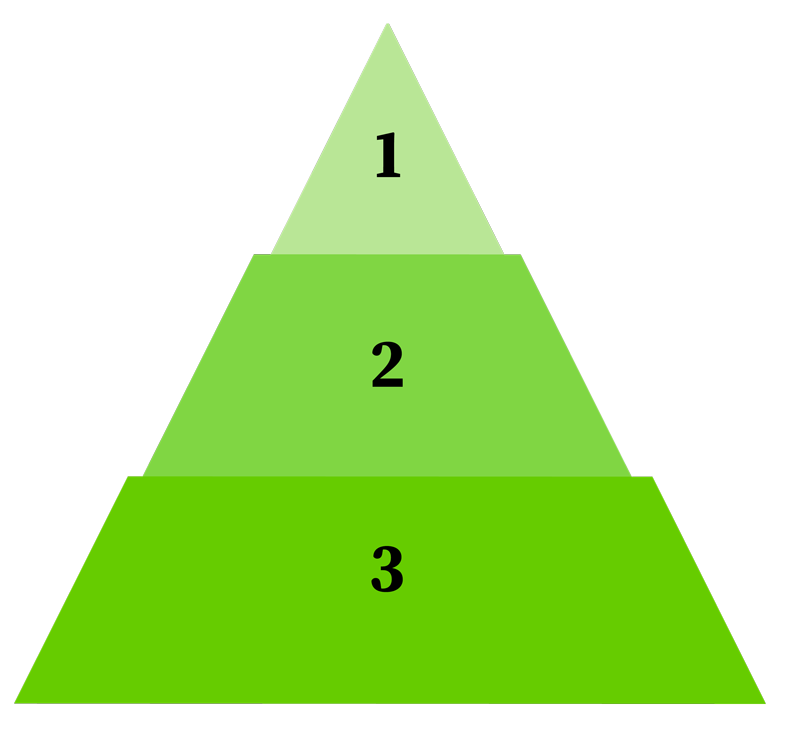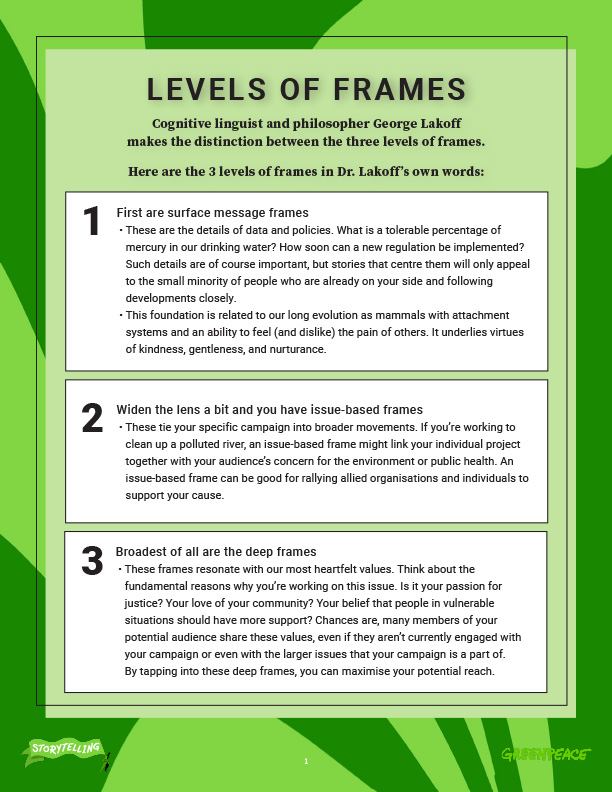EXERCISE: LEVELS OF FRAMES

Cognitive linguist and philosopher George Lakoff makes the distinction between the three levels of frames.
Here are the 3 levels of frames in Dr. Lakoff’s own words:
1
First are surface message frames.
- These are the details of data and policies. What is a tolerable percentage of mercury in our drinking water? How soon can a new regulation be implemented? Such details are of course important, but stories that centre them will only appeal to the small minority of people who are already on your side and following developments closely.
- This foundation is related to our long evolution as mammals with attachment systems and an ability to feel (and dislike) the pain of others. It underlies virtues of kindness, gentleness, and nurturance.
2
Widen the lens a bit and you have issue-based frames.
- These tie your specific campaign into broader movements. If you’re working to clean up a polluted river, an issue-based frame might link your individual project together with your audience’s concern for the environment or public health. An issue-based frame can be good for rallying allied organisations and individuals to support your cause.
3
Broadest of all are the deep frames.
- These frames resonate with our most heartfelt values. Think about the fundamental reasons why you’re working on this issue. Is it your passion for justice? Your love of your community? Your belief that people in vulnerable situations should have more support? Chances are, many members of your potential audience share these values, even if they aren’t currently engaged with your campaign or even with the larger issues that your campaign is a part of. By tapping into these deep frames, you can maximise your potential reach.
Lakoff argues that to reach the masses, we should speak to them on the deep frame level, appealing to core values that many people share. Deep frames also trigger ‘cognitive structures held in long-term memory’.
According to Lakoff, a surface message frame can work better if it also taps into deep frames. But if you only speak on the surface message level, you’ll only be convincing (or even legible) to people who already agree with you.
Take an example of a recent output (i.e. a social media post, a poster, or an email) from your group. Examine it closely as an outsider.
(See diagram below)
1
On what frame level(s) is it working right now? Consider both the visuals and text of your output.
2
Now try to revise the output so that it reaches all three levels of frames.

1. SURFACE MESSAGE FRAMES
Communicates facts/data/policies
Only connects with the people who already agree.
2. ISSUE-BASED FRAMES
Narrower
i.e. For the environment or child care.
3. DEEP FRAMES
Across Political Lines
When something resonates deeply, it’s touched upon a deep frame.
i.e. Freedom, justice, community, responsibility.
DOWNLOAD THIS EXERCISE

